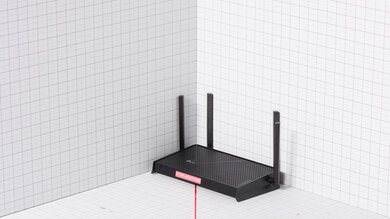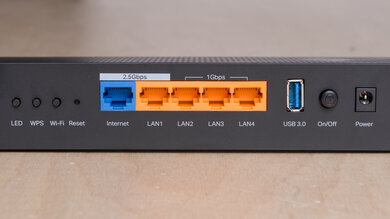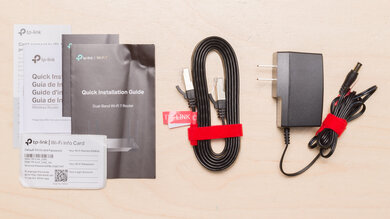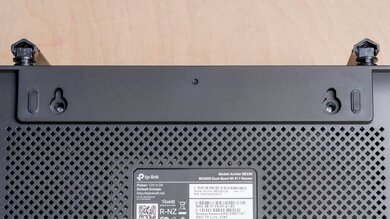The TP-Link Archer BE230, also known as the TP-Link BE3600, is a dual-band Wi-Fi 7 router that only supports the 2.4GHz and 5.0GHz bands. It has five networking ports, two of which support up to 2.5Gbps speeds, as well as a USB 3.0 port to connect a storage device. With EasyMesh support, you can use this router in a mesh network with any EasyMesh-compatible router or range extender. You can set up and manage this router using its web interface or via TP-Link's Tether smartphone app, available on Android and iOS devices.
Note: We've removed the Wi-Fi coverage tests, as we're exploring better ways to convey the results that'll be more helpful to users.
Our Verdict
The TP-Link BE3600 is good for apartments and condos. It provides fast speeds that are suitable for high-bandwidth activities, like multiple high-resolution video streaming. It has a 2.5Gbps LAN port for a fast multi-gigabit wired connection, as well as Dynamic Frequency Selection (DFS) support, which can give you better speeds in noisy wireless environments like large apartment buildings. The downside is that it doesn’t support the 6GHz band, limiting speeds on your Wi-Fi 6E and Wi-Fi 7 devices.
Fast top speeds.
DFS support.
2.5Gbps network ports.
No 6GHz band.
The TP-Link Dual Band BE3600 is decent for use in multi-level homes. It provides fast speeds that are suitable for high-bandwidth activities when you're close to it, but its speeds drop off significantly at long distances. It supports EasyMesh, so you can set up a mesh network with any EasyMesh-compatible router or range extender to improve performance in the far corners of your home. Unfortunately, it doesn't support the 6GHz band, which means you won't be able to reach the top speeds on your Wi-Fi 6E and Wi-Fi 7 devices.
Fast top speeds.
Compatible with EasyMesh.
2.5Gbps network ports.
No 6GHz band.
5GHz band slows down significantly at longer distances.
The TP-Link BE3600 has very good speeds suitable for an internet connection up to ~1Gbps. It also supports Dynamic Frequency Selection (DFS), allowing for better speeds in noisy wireless environments. However, it doesn't support the 6GHz band even though it's a Wi-Fi 7 router, which means you can't take full advantage of the top speeds your Wi-Fi 6E or 7 devices are capable of.
Fast top speeds.
DFS support.
Compatible with EasyMesh.
No 6GHz band.
The TP-Link BE3600 router's speeds drop significantly at longer distances. However, it supports EasyMesh, so you can easily improve performance by setting up a mesh network using any EasyMesh-compatible router or range extender.
Compatible with EasyMesh.
5GHz band slows down significantly at longer distances.
Changelog
- Updated Dec 16, 2025: We've added an MLO Implementation test for Test Bench 0.8.2! Read the changelog for more details.
-
Updated Nov 21, 2025:
We've added a link to the TP-Link Archer BE400 in the Interior Long Range section.
-
Updated Nov 18, 2025:
We've corrected the text in the Differences Between Sizes and Variants section, removing the mention of the TP-Link Archer BE400, a distinct model that we've reviewed separately, and mentioning the TP-Link Archer BE3600 Pro, a Best Buy variant.
-
Updated Aug 29, 2025:
We've added a link to the newly reviewed GL.iNet Flint 3 (GL-BE9300) in the Wi-Fi Specifications section of the review.
Check Price
Differences Between Sizes And Variants
We bought and tested the TP-Link Archer BE230, also marketed as the TP-Link Archer BE3600. TP-Link also sells a Best Buy variant, the Archer BE3600 Pro, but there don't appear to be any differences. If you come across any other variants, let us know in the comments.
Popular Router Comparisons
The TP-Link BE3600 is a good budget router and one of the most affordable options on the market with 2.5Gbps network ports and DFS support. Performance-wise, while it provides faster speeds than most routers in its class, it can't match the throughput of tri-band Wi-Fi 7 routers that have access to the 6GHz band, like the TP-Link Archer BE550.
For more options, check out our recommendations for the best budget and cheap routers, the best mesh Wi-Fi systems, and the best Wi-Fi routers for large homes.
The TP-Link Archer BE400 and the TP-Link Archer BE230 are dual-band Wi-Fi 7 routers. The former sports the same physical design but has six external antennas instead of four on the latter. It also delivers faster speeds and has a longer range.
The TP-Link Archer BE230 and the ASUS RT-AX3000 are both budget routers. The TP-Link has slightly faster speeds when you’re close to it, but its range isn’t as good as the ASUS’, making it less ideal for large homes. That said, you can improve its range by setting up a mesh network with another EasyMesh-compatible router or extender, a feature that the ASUS also supports. The TP-Link has faster 2.5Gbps WAN and LAN ports, while the ASUS only has 1Gbps ports.
The TP-Link Archer BE230 is better than the ASUS RT-AX55. The TP-Link provides faster speeds overall, and it supports Dynamic Frequency Selection, which can improve performance in noisy wireless environments like apartment buildings. While both routers have five network ports, the TP-Link has two 2.5Gbps ports (WAN and LAN), while the ASUS only has 1Gbps ports.
The TP-Link Archer BE230 and the TP-Link Archer AX4400 are both budget routers. The BE230 is slightly better for smaller spaces, as it has faster short-range speeds; however, the AX4400 is better for large homes, as it has better range. Both routers have five network ports; the BE230 has two ports that support up to 2.5Gbps speeds, while the AX4400 only has 1Gbps ports.
Test Results
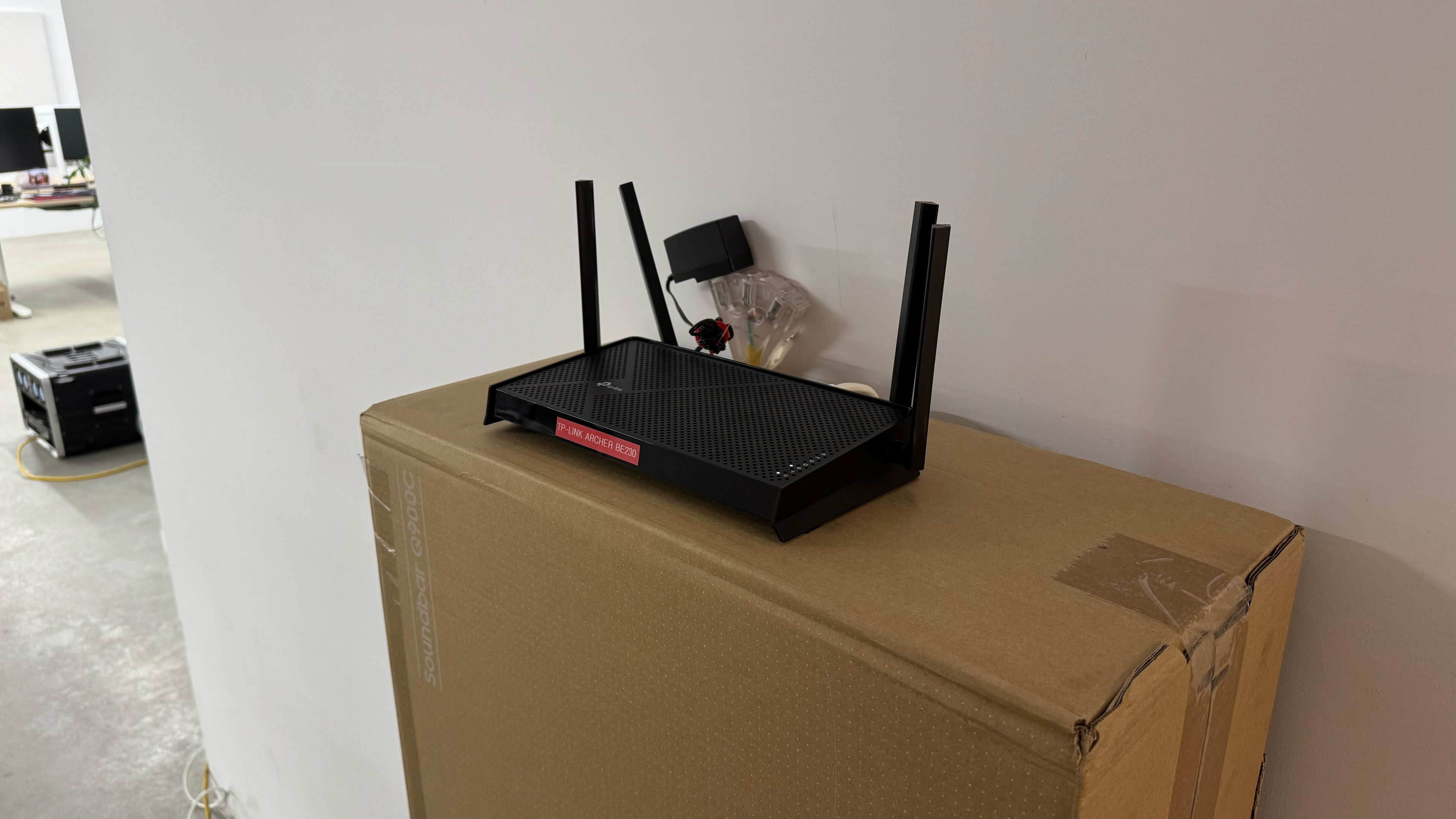
If you're looking for a router with faster, 5Gbps Ethernet ports, check out the eero Pro 7.
The USB port supports external storage drives and various server functions.
If you're looking for a router with better long-range performance, check out the TP-Link Archer BE400.
The TP-Link BE230 supports Wi-Fi 7-specific features like Multi-Link Operation, Multi-RUs, and 4K-QAM; however, it doesn't have access to the 6GHz band, which means you can't take full advantage of the top speeds your Wi-Fi 6E and Wi-Fi 7 devices are capable of. This won't affect you if your regional regulations prohibit the use of the 6GHz band.
If you're looking for a Wi-Fi 7 router with a 6GHz band, check out the UniFi Express 7 or the GL.iNet Flint 3 (GL-BE9300).

